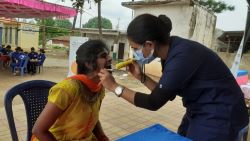Authored by Dr. Gowri Ravi Chinthalapalli, Consultant – Child Development, Aster CMI Hospital
The effect of the pandemic has been felt across the globe, both young and old alike. While to a great extent the virus has infected maximum people, Nonetheless, children have been affected the most in numerous ways. They have had to face educational, psychological and physical issues due to Covid and its aftermath. Awareness programmes and regular preventive measures to handle wellbeing related issues have had to be put on the backburner.
Dyslexia, a learning issue in children, is one such condition which has not been related to schools staying closed. According to experts, the time has come to drive awareness campaign to work with early detection of dyslexia by effectively identifying the symptoms to ensure timely treatment.
Earlier while children used to go to school, these issues were picked up better and earlier, but with online classes, it is very difficult to pick up early especially the milder ones. Children experiencing dyslexia will regularly experience issues coding letters, which affects their talking and writing capacities. Early identification of such symptoms, including trouble to read, compose and express words, is significant for recuperation. Any child suspected to have a learning disability needs a comprehensive assessment by a multidisciplinary team, including clinical or educational psychologists, social workers and speech and language pathologists. For a dyslexic child the sensation of being ‘different’ can be intense when faced with the self-evident and vital need of ‘specialist’ help for his education and potentially mathematical skills. Some expert methods can be incorporated into the classroom so all children can benefit from them, thus decreasing the sensation of ‘difference’.
How to identify dyslexia?
The signs and symptoms become more prominent once the child starts school but parents or caretakers can also identify some early clues such as:
- Early stage before school – Late talking is one of the early signs. They will also have slow learning of new words and difficulties in forming words correctly, having problems in remembering names, colour, number, rhymes, etc.
- Kindergarten and first grade – The symptoms become more apparent in this stage. They usually have reading and writing difficulties and could not process or understand spoken or written words. Often complain about how reading is and won’t want to go to school.
- School age – They take a long time to complete tasks that involve reading or writing and often avoid indulging in these activities. They find it hard to differentiate similar letters and words with similar pronunciation. Hesitating while finding words and answering questions and will have messy handwriting. Due to these, they perform below average than their age group.
- Young and adults – The signs are almost similar to those in children. Commonly seen signs and symptoms are difficulty reading, including reading aloud, mispronouncing names or words, or problems retrieving words, trouble understanding jokes or expressions, difficulty memorizing and are bad in maths.
Effective way to tackle dyslexic kids while online learning:
- Several workshops, seminars, training, outreach and sensitisation programmes to be conducted for teachers in schools.
- Use different colour chalks/pen for each line if there is a lot of written information on the board, or underline every second line with a different coloured chalk/pen.
- Ensure that the writing is well spaced.
- Leave the writing on the board long enough to ensure the child doesn’t rush, or that the work is not erased from the board before the child has finished copying.
- Voice recording of the online class.
- More time should be allocated for completion of work because of the extra time a dyslexic child needs for reading, planning, rewriting and proofreading their work.
Other ways to encourage child with dyslexia include:
- Listening to audio books as an alternative to reading
- Typing on a computer or tablet instead of writing
- Apps that can make learning fun by turning decoding into a game
- Using a ruler to help kids read in a straight line, which can help keep them focused
- Emotional support
 Newspatrolling.com News cum Content Syndication Portal Online
Newspatrolling.com News cum Content Syndication Portal Online







